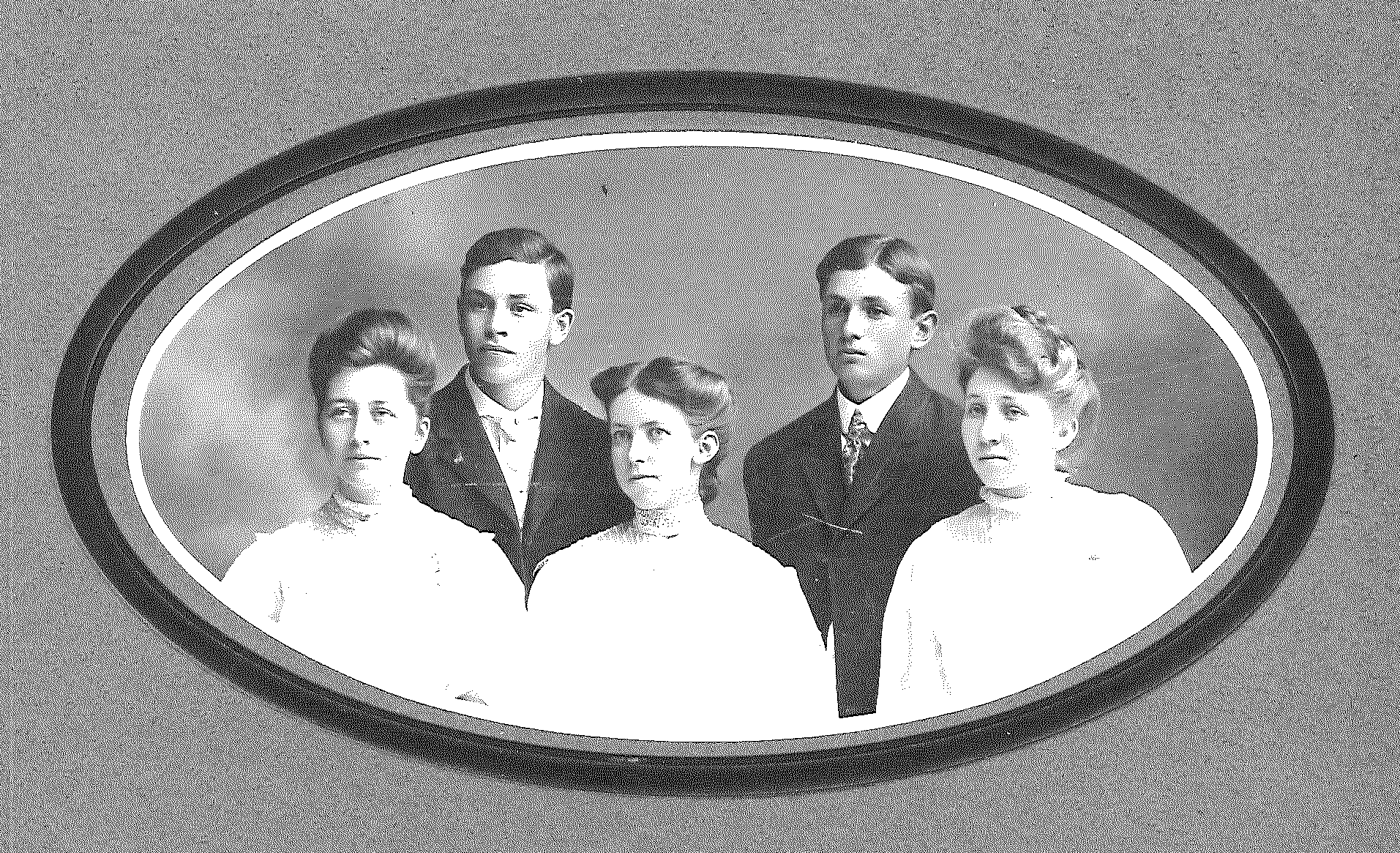Hexagons
Hexagons – 1910s
Elisabeth “Betty” Cress had fond memories of using this quilt during her childhood, beginning in the early 1920s. It was made by her mother, Sabra (Hinkley) Cress, who was born in Mosinee in 1888.
Sabra was the daughter of Samuel “Uncle Sam” and Hattie Hinkley. Born in Maine in 1822, Sam arrived in Mosinee in 1851 and found work at the Joseph Dessert Lumber Company, in whose employ he remained for the rest of his working life. Sam died in 1904 at the age of 66; Sabra was just 16 years old at the time.

The fabrics in this quilt pre-date the years when Sabra made the quilt. It’s possible they came from her mother’s “stash” of material, which she likely eagerly shared with her daughter who was perfecting her talents as a quilter.
Excerpt from undated letter from Sabra, talking about Betty
I made some apple butter this week and 8 more glasses of elderberry jelly - then Friday evening we took our supper to the woods and picked a basket of elderberries and I’m going to make some juice of them. Have it drained now but not bottled. Grapes are going to be dreadfully high, they say.
Wish you could hear Betty chatter. She is looking at books and talks all the time about the pictures. I guess you’ll think her some talker when you get back. She is learning to count, too.
The Quilt
Many tiny hexagonal (6-sided) blocks make up this quilt. Very few fabrics were used more than once. The fabrics date from the mid-1800s through the early 1900s.
Several of the hexagons were cut from a fabric printed in 1876 to celebrate the Centennial of the United States. The pieces were probably in a scrap bag for decades before being used for this quilt. If you can zoom in on the photo, look for pieces with the eagle and shield design.
The hexagons were hand pieced without any paper templates, which were often used in the 19th century to keep the hexagon shapes correctly aligned. Some of these blocks are pulled a little out of shape.
This quilt was made by Sabra Cress of Mosinee in the early 20th century. She used a cotton batting and brown cotton backing, then quilted it by hand. The “double pink” (pink fabric with a pink print) binding on the edges was popular for many decades, from the mid-19th century into the early 20th century.
As a little girl, Sabra’s daughter tried to find two hexagons of the same design, but never could.
